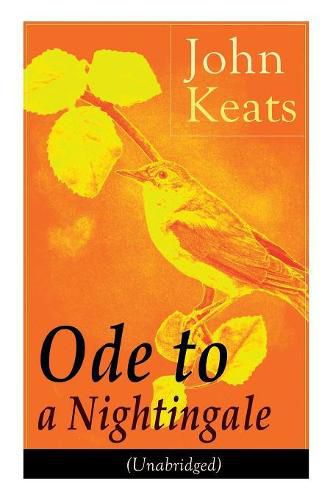Readings Newsletter
Become a Readings Member to make your shopping experience even easier.
Sign in or sign up for free!
You’re not far away from qualifying for FREE standard shipping within Australia
You’ve qualified for FREE standard shipping within Australia
The cart is loading…






This title is printed to order. This book may have been self-published. If so, we cannot guarantee the quality of the content. In the main most books will have gone through the editing process however some may not. We therefore suggest that you be aware of this before ordering this book. If in doubt check either the author or publisher’s details as we are unable to accept any returns unless they are faulty. Please contact us if you have any questions.
Ode to a Nightingale is either the garden of the Spaniards Inn, Hampstead, London, or, according to Keats’ friend Charles Armitage Brown, under a plum tree in the garden of Keats House, also in Hampstead. According to Brown, a nightingale had built its nest near his home in the spring of 1819. Inspired by the bird’s song, Keats composed the poem in one day. It soon became one of his 1819 odes and was first published in Annals of the Fine Arts the following July. Ode to a Nightingale is a personal poem that describes Keats’s journey into the state of Negative Capability. The tone of the poem rejects the optimistic pursuit of pleasure found within Keats’s earlier poems and explores the themes of nature, transience and mortality, the latter being particularly personal to Keats. The nightingale described within the poem experiences a type of death but does not actually die. Instead, the songbird is capable of living through its song, which is a fate that humans cannot expect. John Keats (1795-1821) was an English Romantic poet. The poetry of Keats is characterized by sensual imagery, most notably in the series of odes. Today his poems and letters are some of the most popular and most analyzed in English literature.
$9.00 standard shipping within Australia
FREE standard shipping within Australia for orders over $100.00
Express & International shipping calculated at checkout
This title is printed to order. This book may have been self-published. If so, we cannot guarantee the quality of the content. In the main most books will have gone through the editing process however some may not. We therefore suggest that you be aware of this before ordering this book. If in doubt check either the author or publisher’s details as we are unable to accept any returns unless they are faulty. Please contact us if you have any questions.
Ode to a Nightingale is either the garden of the Spaniards Inn, Hampstead, London, or, according to Keats’ friend Charles Armitage Brown, under a plum tree in the garden of Keats House, also in Hampstead. According to Brown, a nightingale had built its nest near his home in the spring of 1819. Inspired by the bird’s song, Keats composed the poem in one day. It soon became one of his 1819 odes and was first published in Annals of the Fine Arts the following July. Ode to a Nightingale is a personal poem that describes Keats’s journey into the state of Negative Capability. The tone of the poem rejects the optimistic pursuit of pleasure found within Keats’s earlier poems and explores the themes of nature, transience and mortality, the latter being particularly personal to Keats. The nightingale described within the poem experiences a type of death but does not actually die. Instead, the songbird is capable of living through its song, which is a fate that humans cannot expect. John Keats (1795-1821) was an English Romantic poet. The poetry of Keats is characterized by sensual imagery, most notably in the series of odes. Today his poems and letters are some of the most popular and most analyzed in English literature.